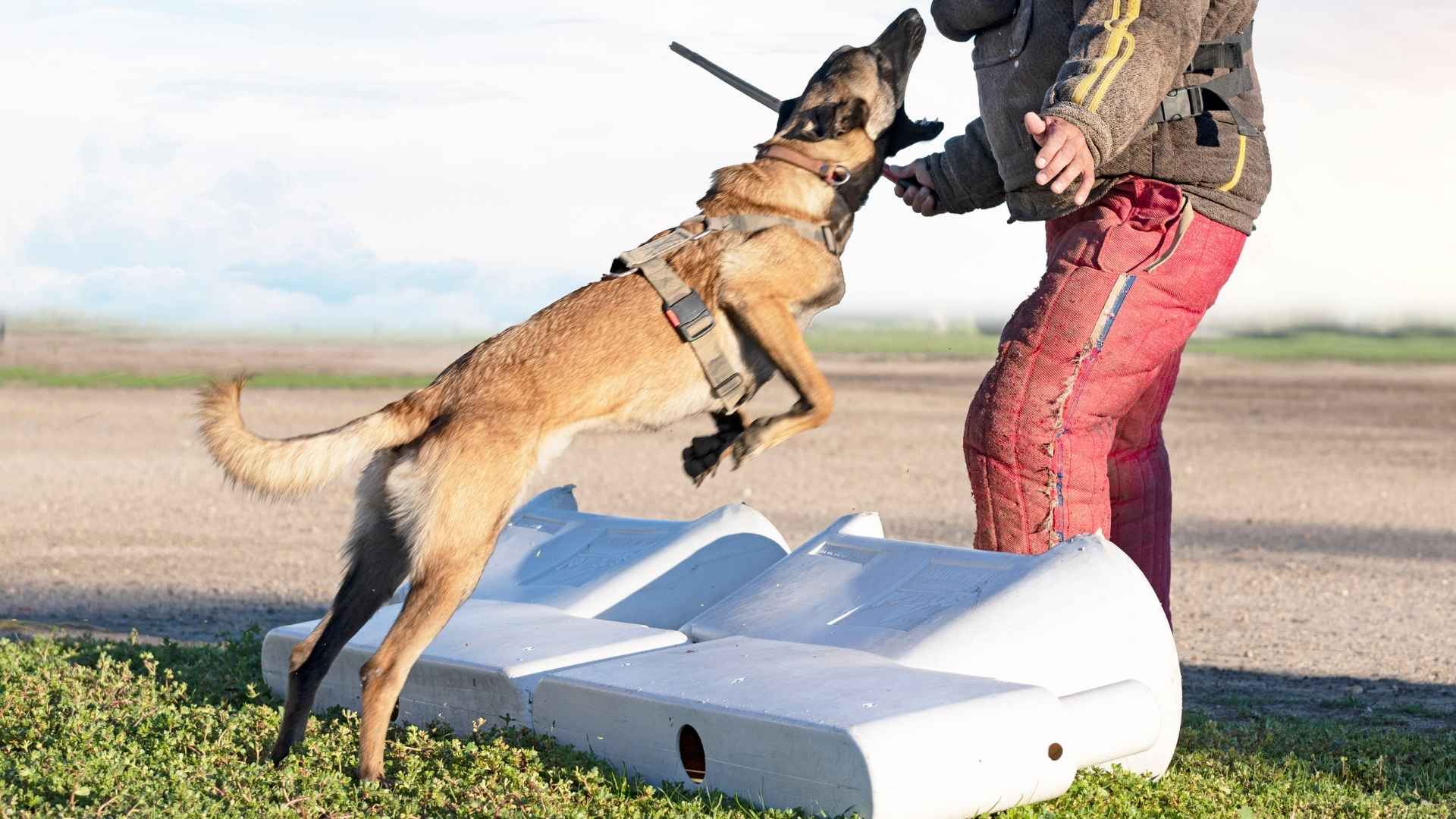Some dogs don’t need to bark to make a statement — their presence alone speaks volumes. These XL powerhouses weren’t bred for fetch or frills; they were shaped by centuries of work, war, and wild terrain. With bite forces that rival wild predators, they are the quiet guardians, the immovable protectors, and the last line of defense.
But don’t mistake their strength for savagery. Behind those iron jaws are loyal hearts, tuned to their families and fiercely protective of what’s theirs. These dogs don’t pick fights — they end them.
The seven high bite force XL breeds you’re about to meet aren’t just big — they’re built with purpose, packed with instinct, and ready to defend at a moment’s notice.
High Bite Force XL Dog Breeds
1. Anatolian Shepherd
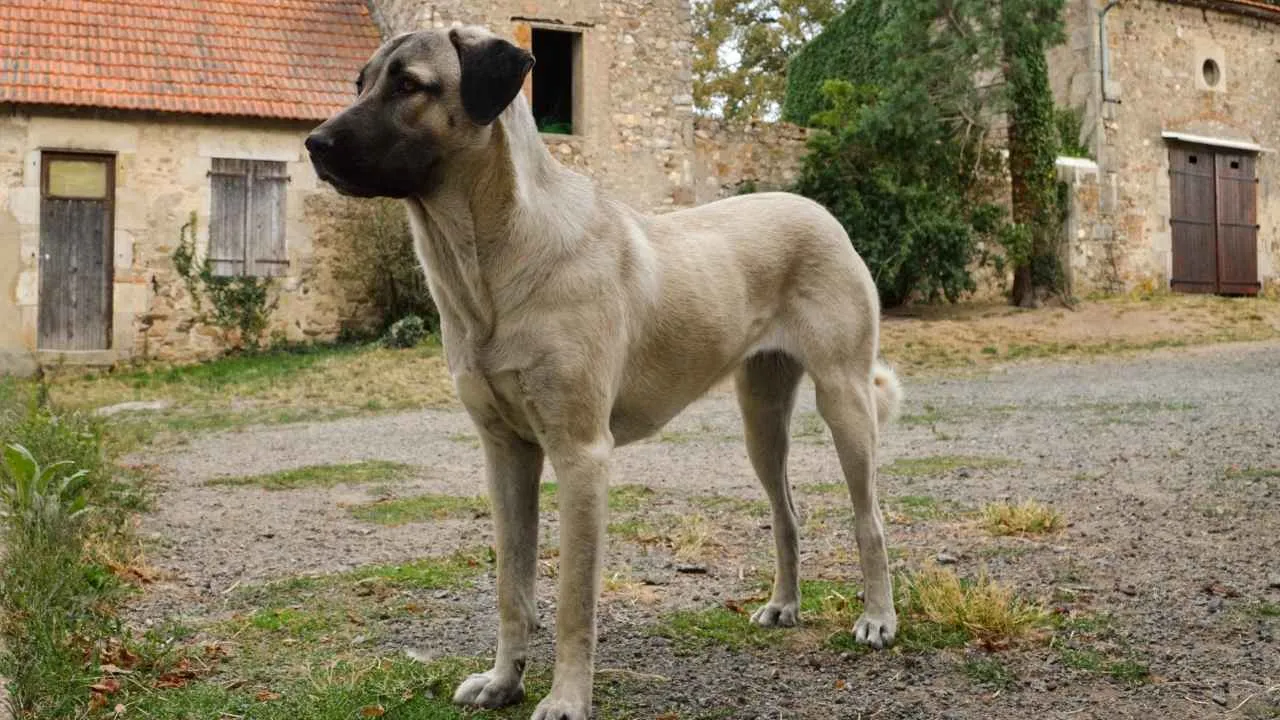
The Anatolian Shepherd is a true powerhouse, and their bite force that is 743 PSI reflects the strength they were bred for. Originally bred in Turkey, these dogs were designed to protect livestock from large predators like wolves and bears. Their strong jaws are capable of taking down threats, making them one of the most formidable guard dogs around.
What sets the Anatolian Shepherd apart is its independence. Unlike many breeds that rely on constant supervision, these dogs are natural problem-solvers. They don’t need guidance to decide when a predator is near. This independence is perfect for guarding a flock in remote areas, where human assistance is rare.
Another key trait of the Anatolian Shepherd is its calm demeanor, says VCA. Despite being large and powerful, these dogs aren’t quick to act. They observe situations carefully before reacting, making them excellent guardians. If they don’t sense danger, they won’t waste their energy on unnecessary actions.
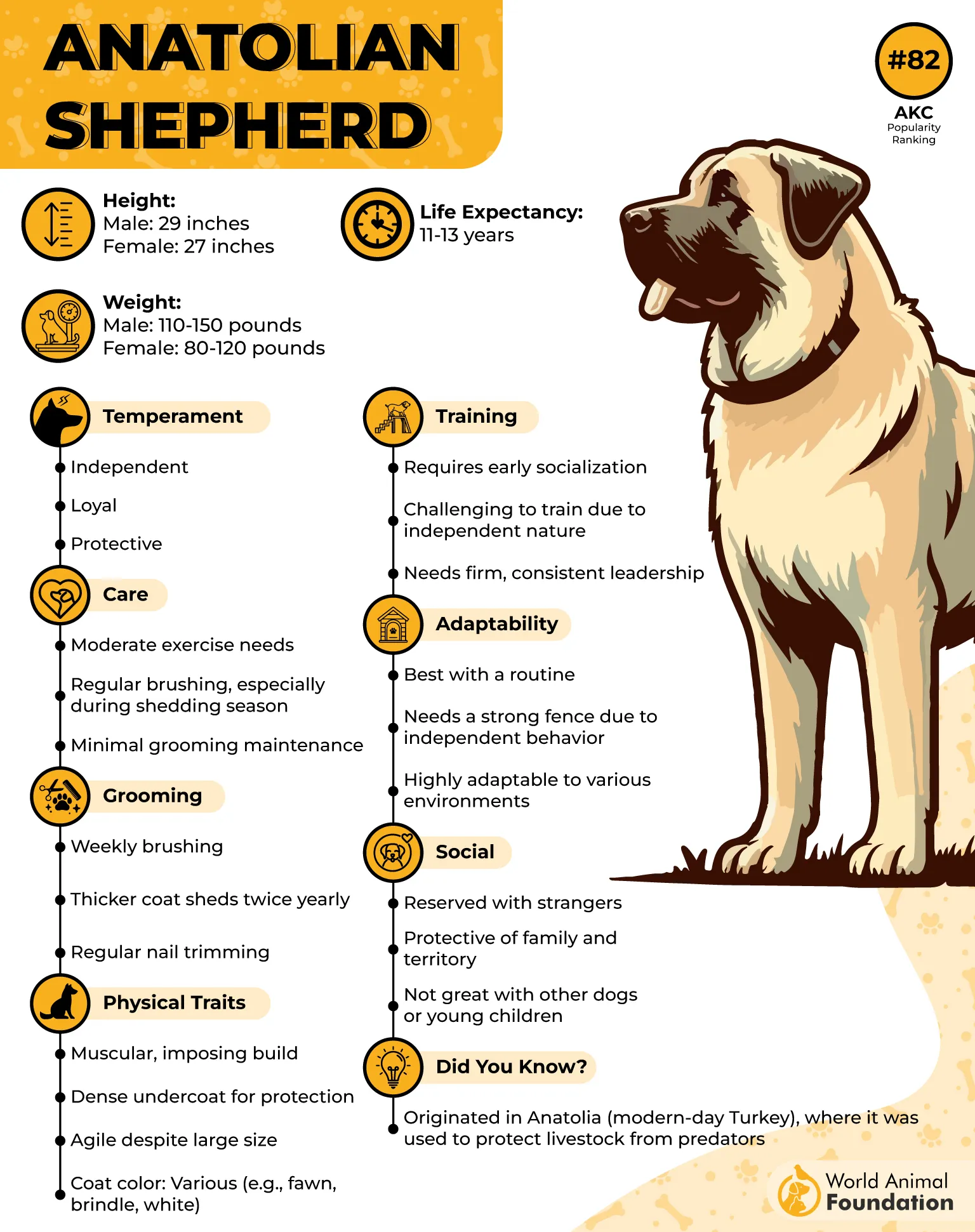
Anatolian Shepherds thrive in spacious environments. They were originally tasked with covering vast expanses of land while protecting livestock. This breed does best when they have plenty of space to roam and patrol. Without room to move, they can become frustrated, so large yards or access to open fields are essential.
Training an Anatolian Shepherd requires patience. They’re incredibly intelligent, but their independent nature can make them stubborn. Positive reinforcement works best with this breed—they respond well to gentle guidance and consistency. Establishing trust and respect is key to building a strong bond with your Anatolian Shepherd.
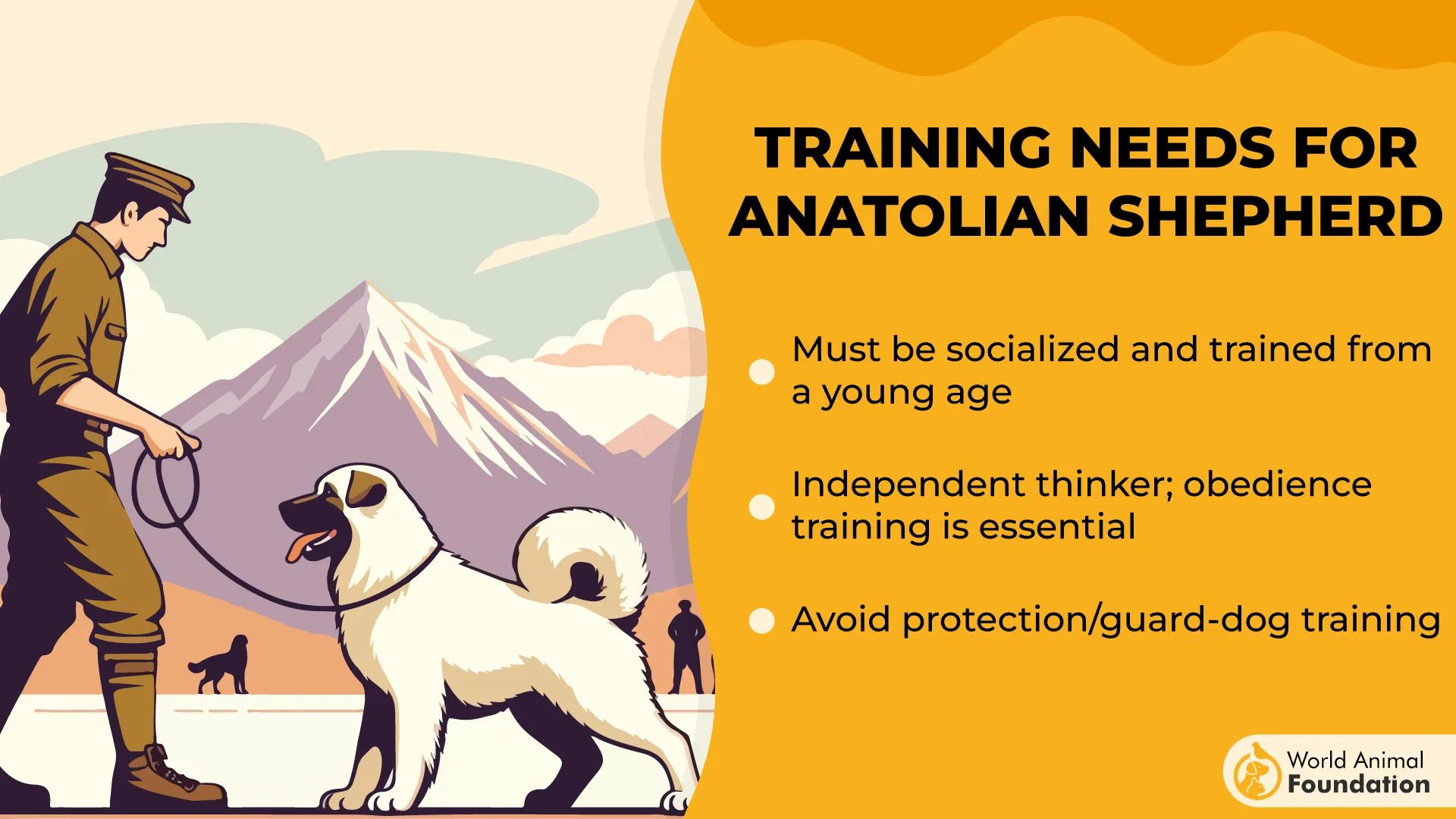
Fun Fact:
Anatolian Shepherds have been known to “talk” in their own way. They often vocalize with low growls or specific sounds to communicate with their owners, especially when they’re alerting them to something unusual. So, if you hear a low rumble coming from your Anatolian, it’s probably a warning sign!
2. Leonberger
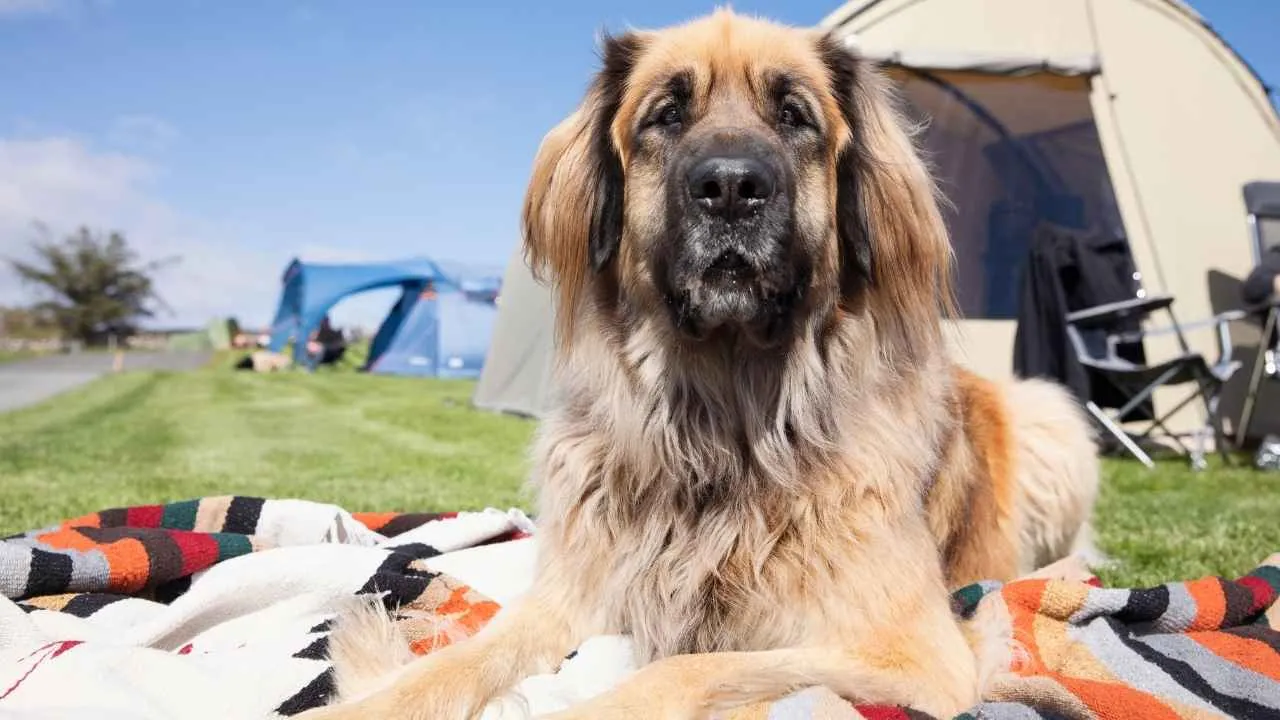
The Leonberger is a powerful breed, known for its large frame and impressive bite force, 349 PSI. Bred in Germany for tasks like guarding livestock and pulling carts, they were designed to be strong protectors. Their bite force can fend off potential threats, making them natural guardians.
Despite their size and strength, Leonbergers are incredibly gentle, says PDSA. They’re often described as “gentle giants” because of their calm and loving nature. Though protective, they don’t show aggression unless necessary, making them a great choice for families.
Their protective instincts are instinctive, and they have no problem stepping up when their family is in danger. When it comes to defending loved ones, their strong bite force is a serious asset. They can be trusted to guard with dedication.
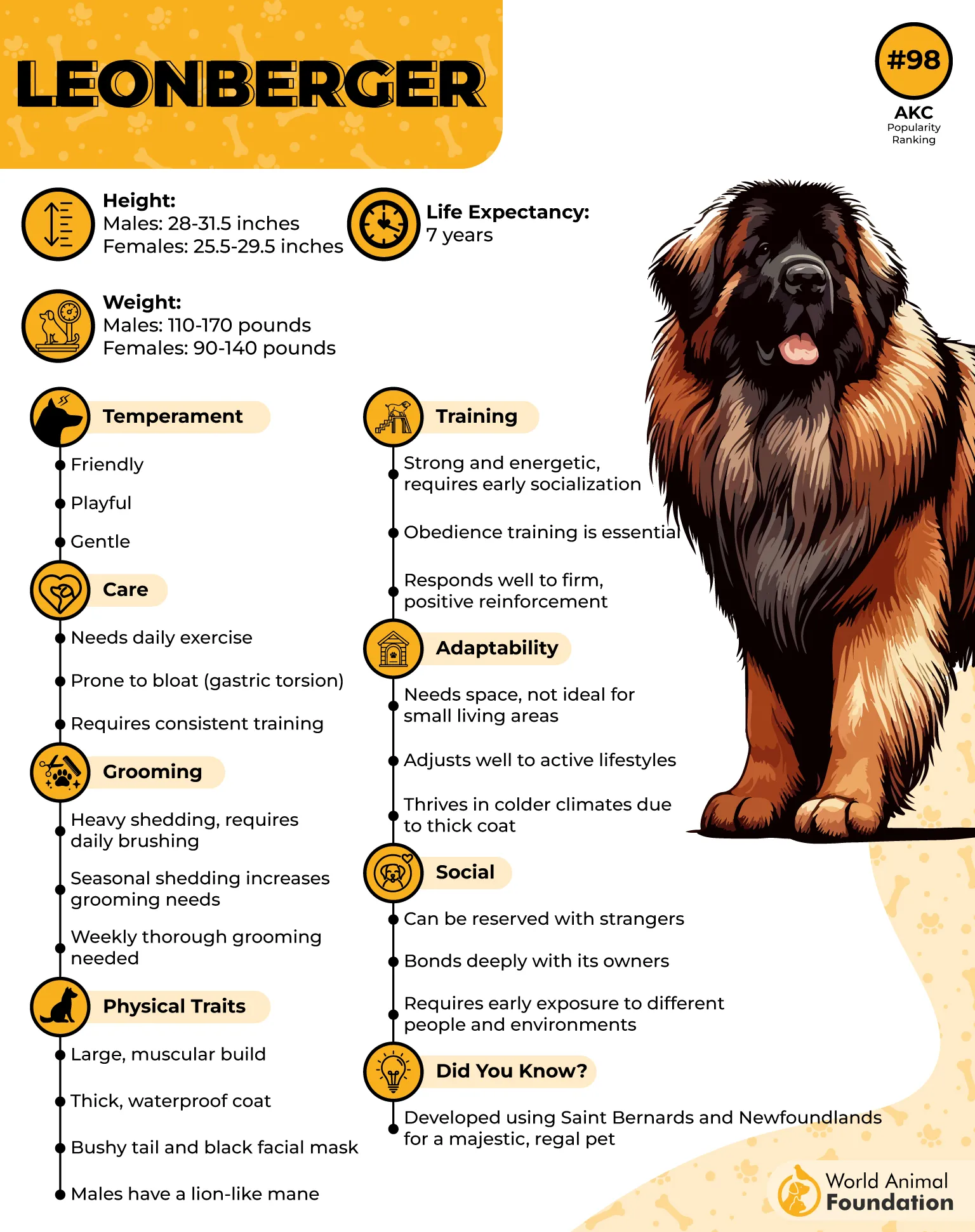
The Leonberger is highly affectionate and loves to be around people. They’re known for being loyal companions who seek out attention and enjoy family time. These dogs thrive when they are part of the household activities and will always be by your side.
Training a Leonberger requires consistency and patience. They’re intelligent but can sometimes be a bit stubborn. They respond best to positive reinforcement and need a confident owner who can provide structure and guidance.
Leonbergers are moderately active dogs. While they enjoy exercise, they’re also happy with a more laid-back lifestyle. Regular walks and playtime will keep them in good shape, but they also appreciate their downtime with family.
Fun Fact:
Leonbergers are known for their “lap dog” behavior, despite their massive size. They often forget they’re not tiny and will try to snuggle on your lap, thinking they’re a small dog!
3. English Mastiff
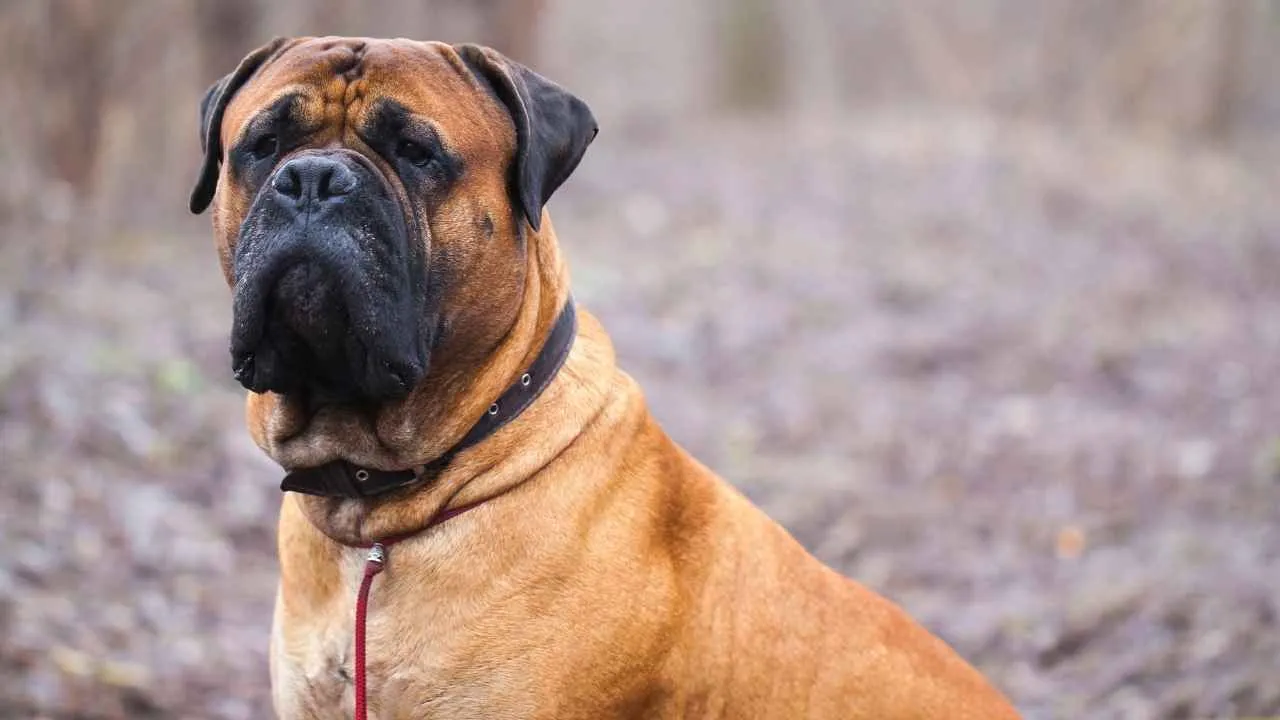
The English Mastiff is one of the most powerful and largest dog breeds, boasting a 556 PSI bite force that reflects its history as a guardian and protector. Originally bred in England for tasks like guarding livestock and estates, these dogs were often used for protection against large predators and intruders. With their massive size and strong bite, they are more than capable of defending their territory.
While their bite force may be intimidating, English Mastiffs are known for their gentle temperament, says Purina. Despite their formidable presence, they’re often described as “gentle giants.” These dogs are typically calm, friendly, and affectionate, particularly towards their families. They may not be aggressive by nature, but their protective instincts can be triggered when they sense a threat.
Though massive, English Mastiffs are surprisingly low-energy compared to other large breeds. They are generally content to relax with their family members, often preferring a quiet, laid-back lifestyle. A daily walk is usually enough to keep them fit, and they’re happy to lounge around the house the rest of the time.
Due to their large size, English Mastiffs require space to move comfortably. While they don’t need constant exercise, a large yard or access to outdoor space is ideal. They enjoy lounging but also need room to stretch and move freely. Their gentle nature makes them an ideal choice for families with enough space.
Despite their intimidating size, English Mastiffs tend to get along well with other animals, especially if they’ve been socialized properly. They are generally gentle with other pets and children, showing great patience and understanding. Their calm demeanor makes them excellent companions for families.
Fun Fact:
Despite their intimidating size, English Mastiffs are known for their love of cuddling! These giants are often found lounging on the couch with their owners, happily laying across laps or curling up next to family members. It’s not uncommon for them to think they’re small enough to be lap dogs!
4. Tosa Inu
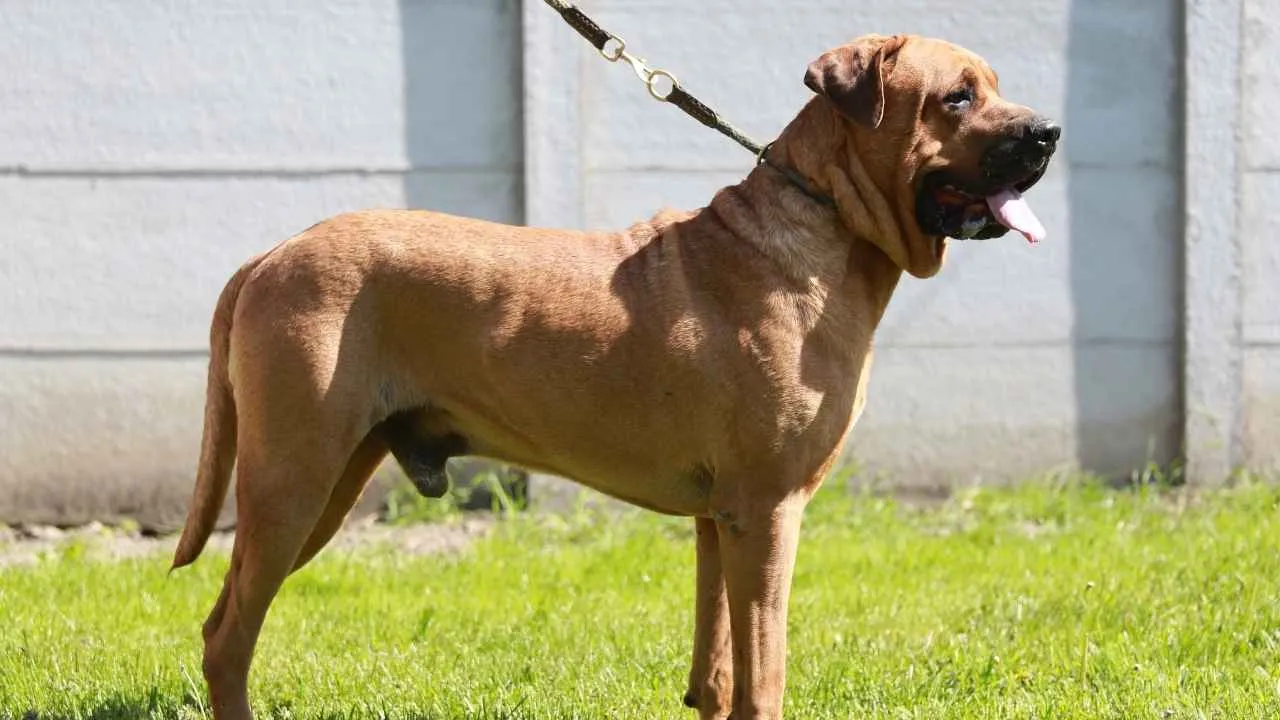
The Tosa Inu, also known as the Japanese Mastiff, is a powerhouse of a dog, known for its remarkable bite force that is 555 PSI. Bred in Japan for dog fighting, this breed was developed to combine strength with a calm and confident demeanor. With their powerful jaws, they can easily protect their family or territory when necessary.
Despite their tough history, Tosa Inus are not naturally aggressive. They are typically calm and reserved, forming strong bonds with their families. AKC says that their loyalty, devotion, patience, and protective instincts make them excellent guard dogs, but they are generally gentle and loving towards those they know.
These dogs have a bite force that is among the strongest in the canine world. While they were originally bred for combat, today’s Tosa Inu uses this powerful bite mainly for defense. When they feel their loved ones are threatened, they will not hesitate to act.
Training a Tosa Inu requires patience and consistency. They are intelligent but independent, which can make them somewhat stubborn. A calm, confident owner is essential to guide them through training, using positive reinforcement to ensure good behavior.
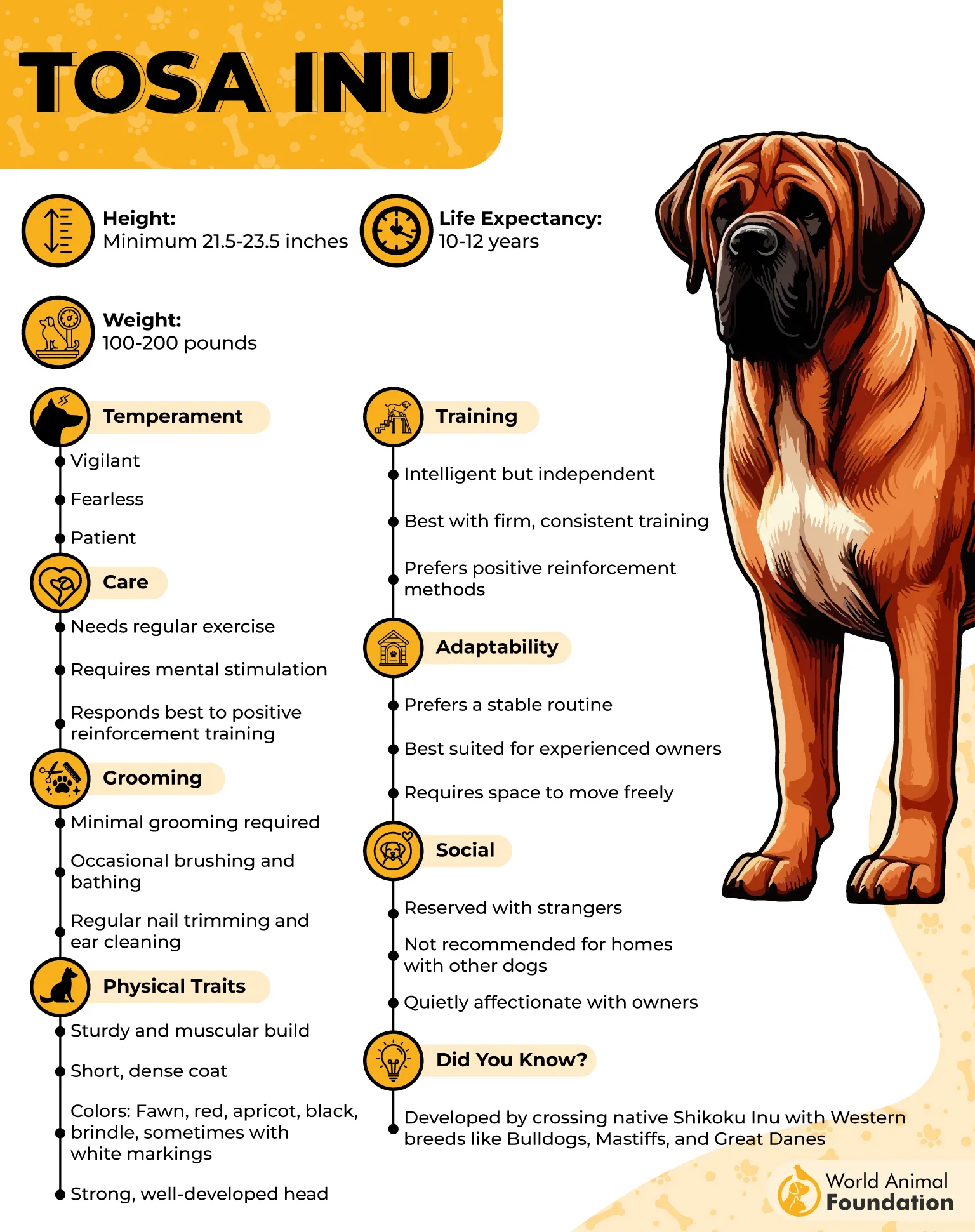
Tosa Inus are adaptable dogs that can thrive in various environments. While they were bred for active tasks, they are content in both large yards and more urban settings, as long as they get enough mental and physical stimulation.
These dogs are generally calm and quiet, but can be alert when needed. Their instincts make them excellent watchdogs, and their protective nature ensures that they will always be there to defend their family if the need arises.
Fun Fact:
Tosa Inus are often described as “stoic” dogs, meaning they don’t show much emotion outwardly. However, they are deeply affectionate with their families and form tight bonds, often following their owners around like shadows, always ready to protect and love!
5. Tibetan Mastiff
The Tibetan Mastiff is a majestic and powerful breed known for its impressive bite force and guarding abilities. Originating from the Tibetan Plateau, these dogs were bred to protect livestock from predators like wolves and bears. Their bite force is one of the strongest, enabling them to defend effectively against large threats, making them ideal guardians.
Despite their intimidating presence, Tibetan Mastiffs are generally calm and independent, says PetMD. They’re not overly aggressive but are incredibly protective of their family and territory. With their strong instincts, they make excellent guard dogs for anyone looking for a formidable protector who also has a calm side.
The Tibetan Mastiff’s bite force, which is 550 PSI, is often highlighted as one of the key traits of the breed. In their native environment, their jaws were critical for fending off large predators. Today, they still retain this powerful bite, and it’s a testament to their guarding abilities and natural protection skills.
Though Tibetan Mastiffs are large and strong, they are surprisingly laid-back at home. They’re not as energetic as some other large breeds, and they are content with a couple of daily walks and some playtime. Their calm demeanor makes them excellent companions for those who can provide a stable environment.
Socializing a Tibetan Mastiff from an early age is crucial. They are naturally aloof with strangers and can be reserved, which makes them excellent watchdogs. However, they need exposure to other people and animals to avoid becoming overly protective or territorial.
Fun Fact:
Tibetan Mastiffs were once used by Tibetan monks to guard their monasteries. These dogs were considered so valuable that they were often given as gifts to nobility. The breed’s historical role as protectors of sacred places only adds to their mystique!
6. Neapolitan Mastiff
The Neapolitan Mastiff, with its imposing size and powerful bite force, is one of the most striking breeds in the dog world. Known for their protective nature, these dogs were originally bred in Italy to guard estates and livestock. Their bite force is strong enough to deter intruders, making them excellent protectors of their family and home.
Despite their intimidating appearance, Neapolitan Mastiffs are known for their calm and affectionate demeanor. WebMD states that they are typically gentle giants, deeply loyal to their families. These dogs are particularly fond of children and are known to be very patient with them, showing a surprisingly tender side despite their imposing presence.
Their powerful bite, 556 PSI, is a key feature of the Neapolitan Mastiff, and it’s a testament to their history as guardians. Though they don’t show aggression unless provoked, their bite force makes them incredibly effective at warding off threats. This breed’s natural protective instincts make them a reliable guardian.
Training a Neapolitan Mastiff can be a bit of a challenge, but they are smart and intelligent dogs. They tend to be independent thinkers, so it’s important for owners to establish clear boundaries early on. Consistent, positive reinforcement is key to helping them understand expectations. They need a firm but patient owner.
Neapolitan Mastiffs are not overly energetic dogs, but do require regular exercise to keep them healthy. Their size means they aren’t the best candidates for apartment living, but with a spacious home and yard, they’ll thrive. A few daily walks and some playtime are usually sufficient to keep them content.
While they are protective and alert, Neapolitan Mastiffs are not known for being overly aggressive. They are typically more reserved, only showing aggression when they feel their family is threatened. This makes them excellent guard dogs, but they also have a calmer, more affectionate side when with their family.
Fun Fact:
Neapolitan Mastiffs have distinctive loose skin and deep wrinkles that give them their signature “droopy” look. But did you know that those folds were actually developed to help protect vital areas of the dog’s body during combat? It’s believed that the wrinkles acted as a buffer, making it harder for an opponent to grab onto the dog’s skin!
7. Brasileiro
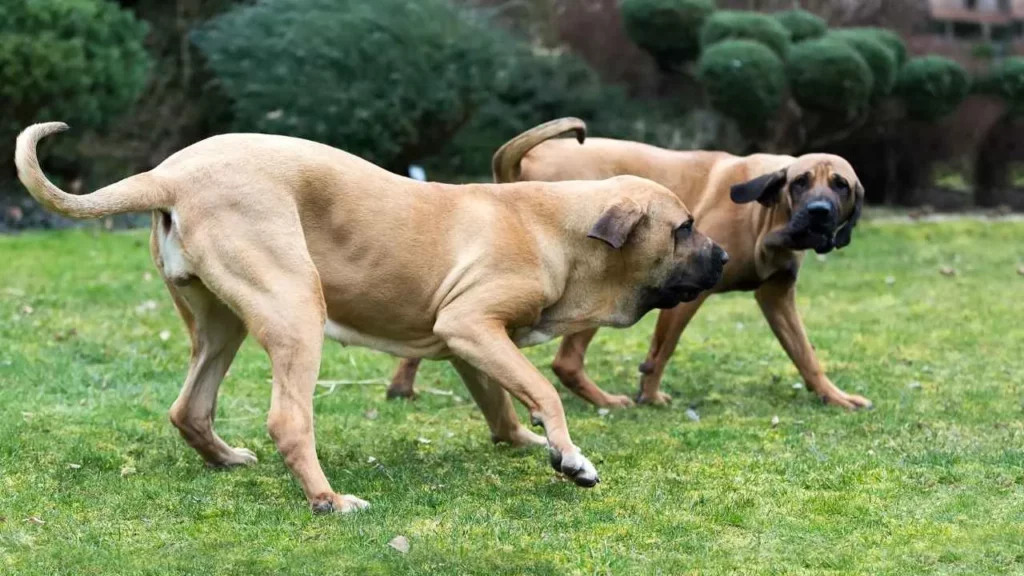
The Fila Brasileiro, also known as the Brazilian Mastiff, is a powerful and imposing breed known for its incredible bite force and protective instincts. Originating in Brazil, this breed was originally bred to guard cattle and property, making it a natural protector. With a strong bite and assertive demeanor, they excel at defending their territory and family.
Fila Brasileiros are incredibly loyal and affectionate to their families. They tend to form strong bonds with their owners, and once they trust someone, they are deeply devoted. This loyalty, combined with their powerful bite, makes them excellent guard dogs. However, they are not generally friendly toward strangers, which is a key characteristic of the breed.
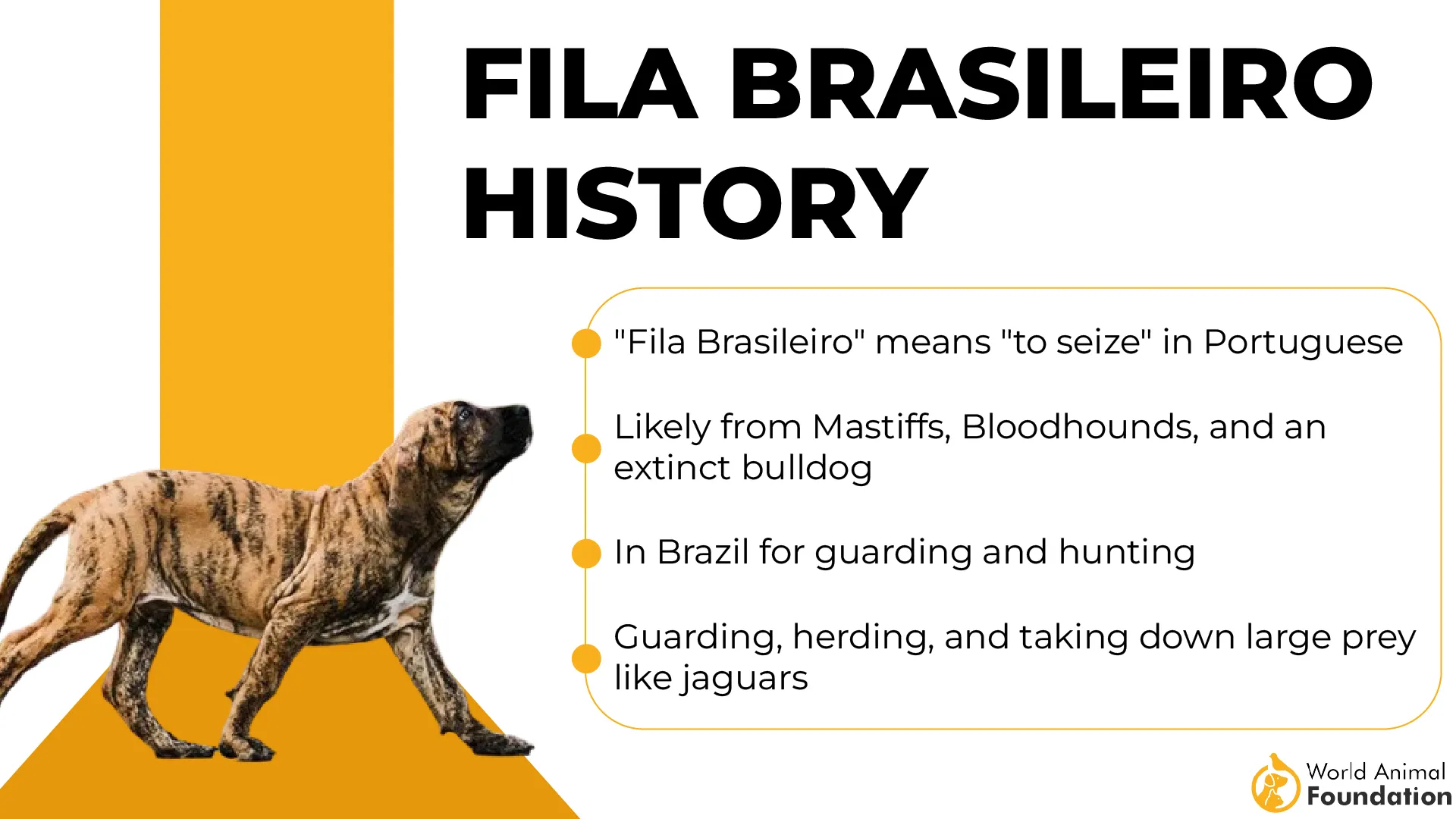
The 400 PSI bite force of the Fila Brasileiro is one of the strongest in the canine world. While these dogs are not typically aggressive unless provoked, their protective nature ensures that they can defend against threats swiftly and decisively. Their strong jaws are a natural defense mechanism, perfect for safeguarding both family and property.
While they are natural guardians, Fila Brasileiros are generally calm and composed in a familiar setting. They are not high-energy dogs, preferring a relaxed pace and some time to unwind with their family. Daily walks and a secure, spacious area to roam are ideal for keeping them happy and healthy.
Though they can be somewhat aloof and reserved, Fila Brasileiros are usually quite good with children and other pets in their family. Early socialization and proper training help ensure that they are well-behaved and comfortable in a household environment. Their protective instincts make them great companions for families looking for a devoted guardian.
Fun Fact:
Fila Brasileiros are known for their “protective stance.” If they feel that their loved ones are at risk, they will take a stand and block access, often sitting or standing tall with unwavering focus. This protective nature is rooted in their history as guardians of cattle and estates in Brazil!
Conclusion
High bite force XL dog breeds like the American Pit Bull Terrier, Tosa Inu, Cane Corso, English Mastiff, and French Mastiff showcase some of the strongest bite force measurements ever recorded—often exceeding 600 pounds per square inch (psi) and in some cases, such as the Cane Corso, reaching up to 700 psi. These powerful bite forces are a result of specific jaw structures and muscular builds, developed over generations of selective breeding. Many of these mastiff breeds and fighting dog types were initially bred for guarding, protection, and even war dog roles, which explains their aggressive temperament and unmatched strength in the dog world.
But with great power comes great responsibility. Dog owners of such large dog breeds must understand the importance of proper training, dog attack prevention tips, and knowing their dog’s body language. Breeds like the German Shepherd, Dutch Shepherd, and American Bulldog—though popular and often excellent guard dogs—can still be involved in dog bite cases if not properly trained. While aggressive behavior may exist in certain dog breeds, many dogs with the strongest dog bites can also be great family pets when socialized and managed correctly.
Whether you’re choosing one of the most popular dog breeds or exploring mixed breeds with muscular builds, knowing the actual bite force, bite strength, and bite force measurements of these dangerous breeds can make all the difference. Reported bites often stem from a lack of education and awareness, not necessarily the breed itself. In truth, many large-breed dogs, even those originally bred for dog fighting, can become loving companions with the right training. So, if you’re looking to welcome one of these protective dogs into your home, do your research, consult trainers, and prioritize responsible ownership.


